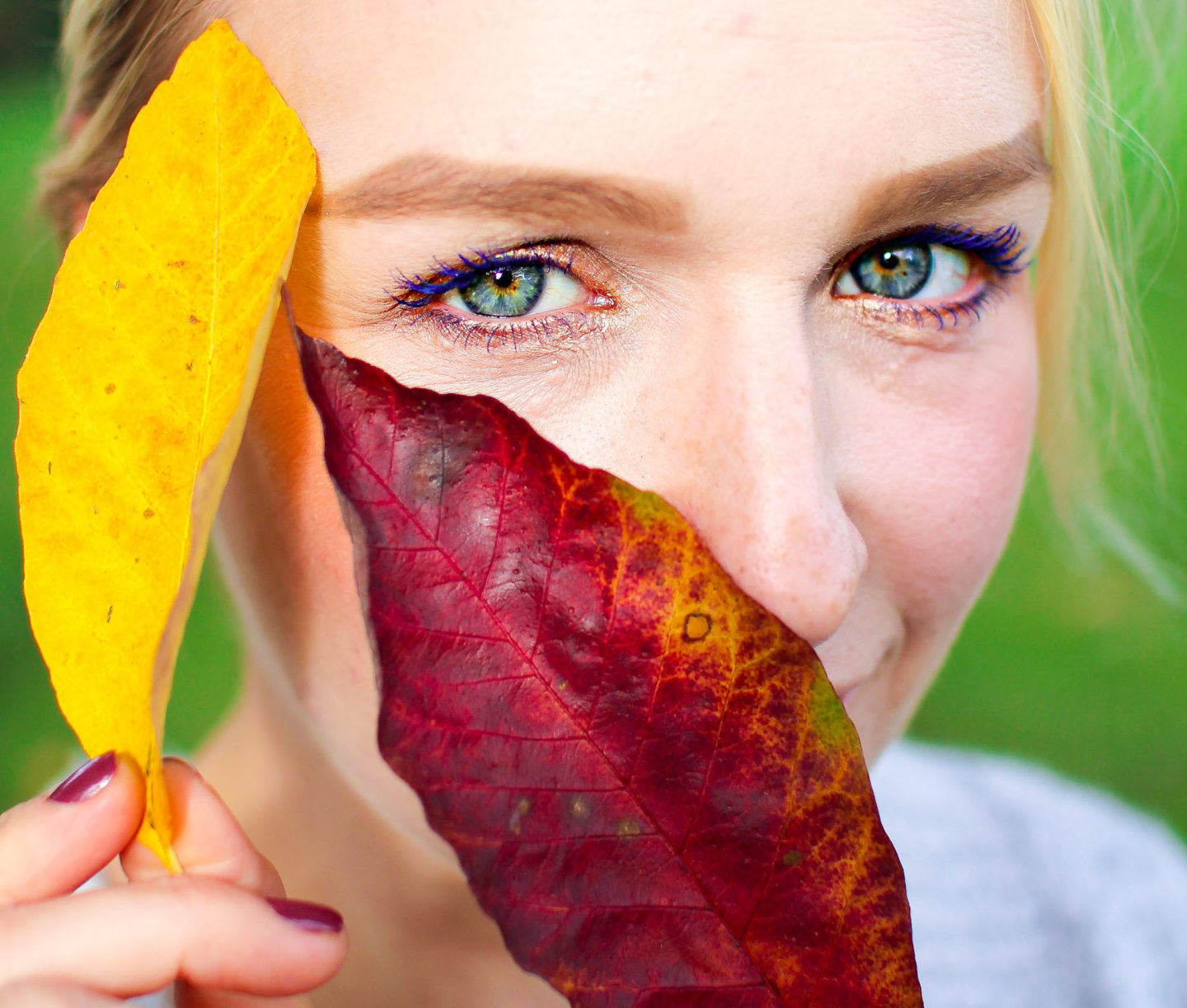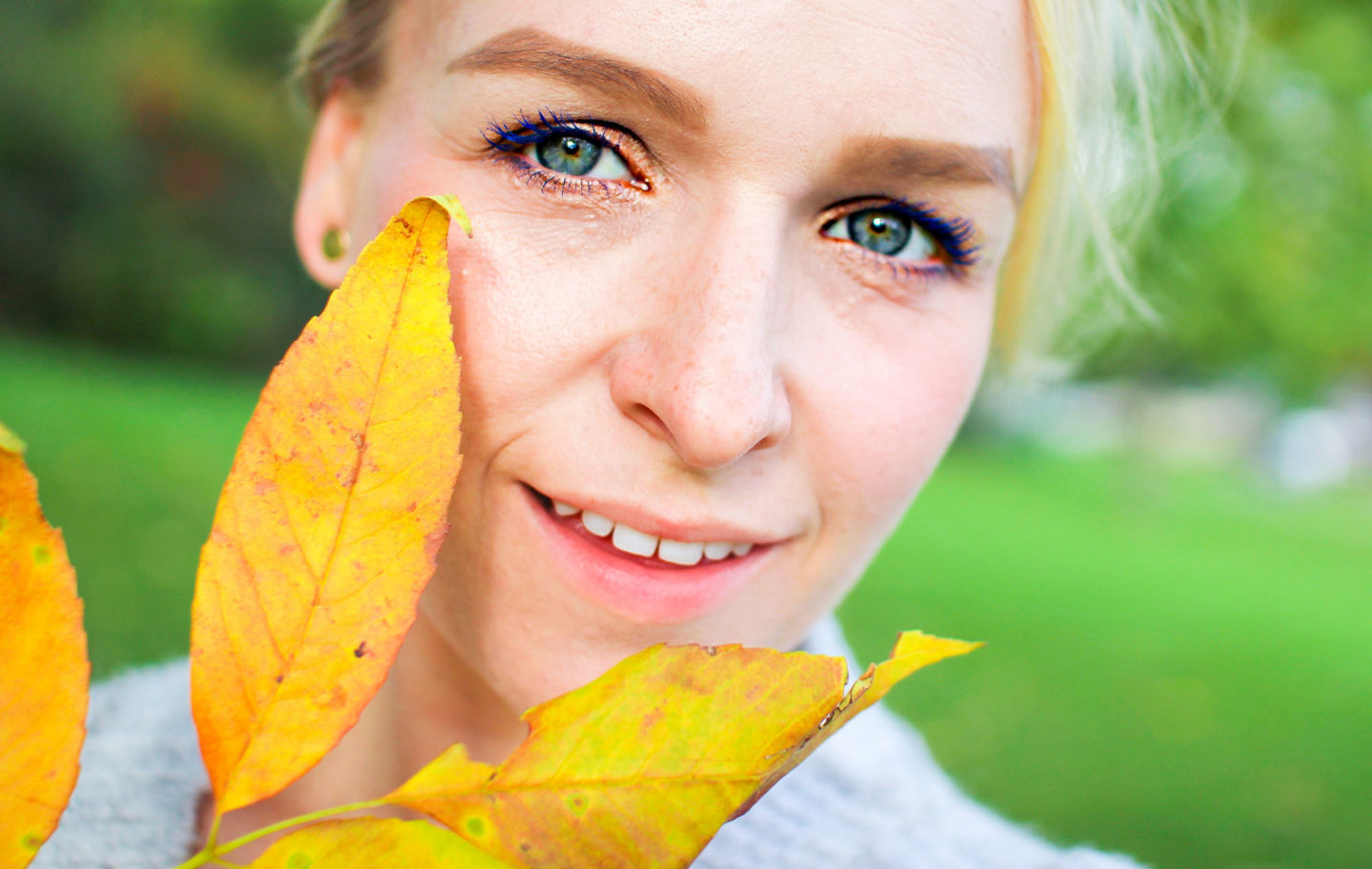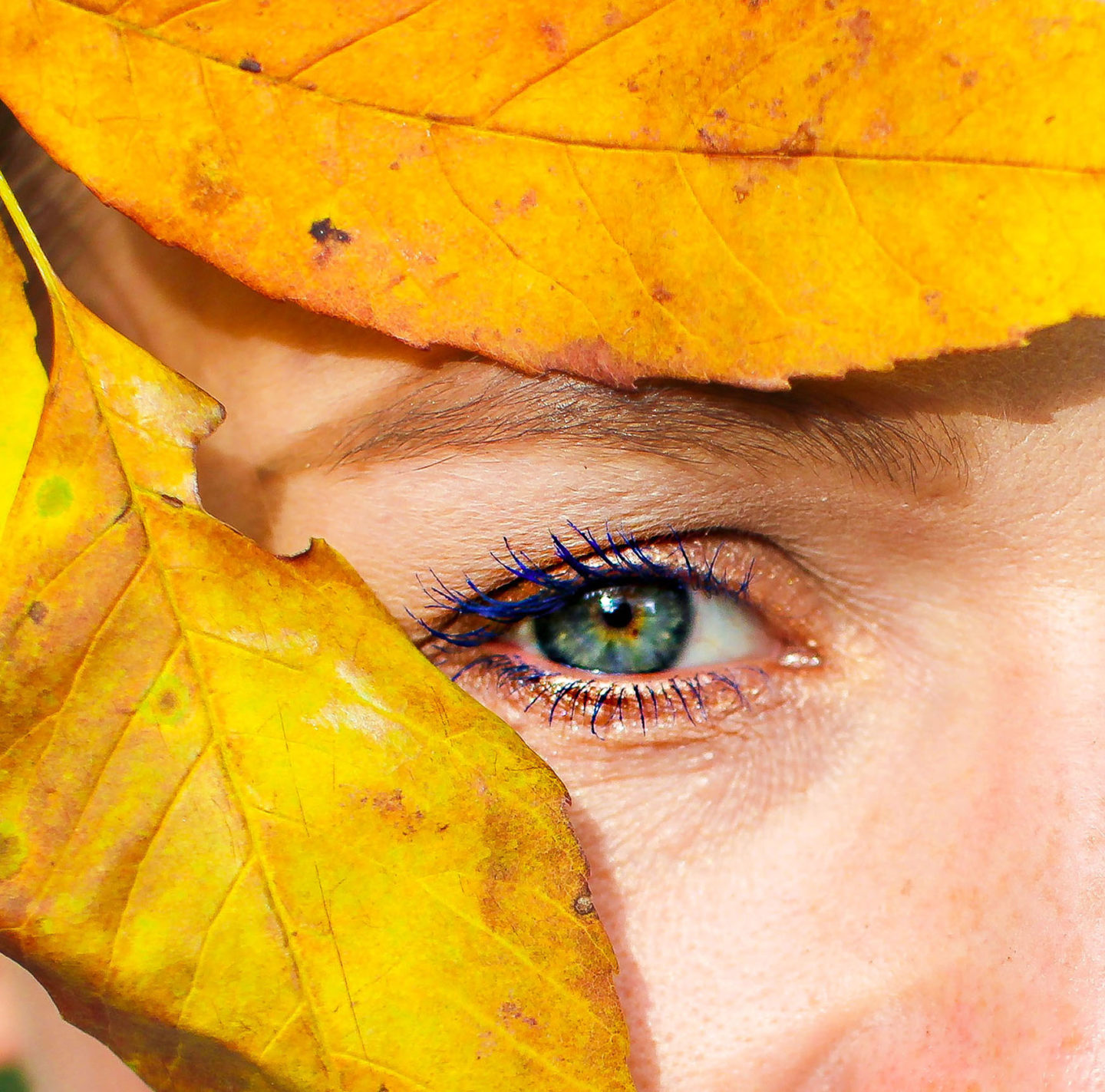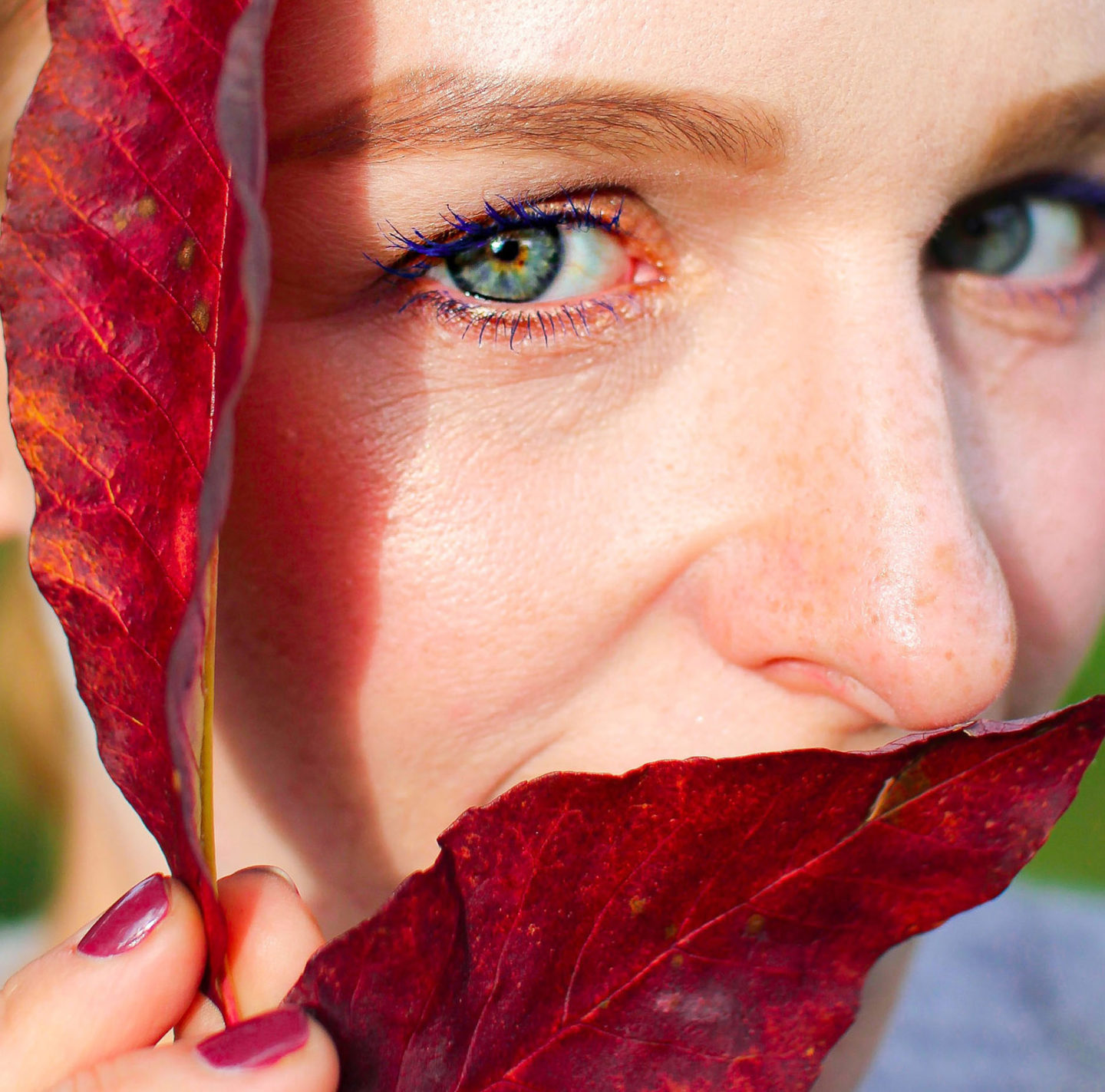No two eyes are alike, just like no two fingertips are alike.
When it comes to our general health, most of us are pretty attuned to taking care of our bodies, because suddenly when we’re not able to move and function as usual, it can be detrimental to our day. We’re acutely aware of whether or not we’re feeling physically well. Whether we woke up with new aches and pains, or feel as though we’re starting to come down with something.

Comparing eyes to fingertips is my cute way of contrasting our general health to our visual health. Sadly, I probably give more consideration to the state of my manicure than to my vision on a daily basis. Most days, I don’t even acknowledge the superpower that my eyes hold: the ability they give me to see. I don’t often remember to feel grateful for that ability.
Generally, I don’t even acknowledge the superpower that my eyes hold: the ability they give me to see. I probably give more consideration to the state of my manicure than to my vision on a daily basis.
Why is it that when it comes to taking care of our eyes many of us seem to take their function, and health, for granted?
This is ironic because many of us are completely reliant on our ability to see.
Thursday, October 8th, 2020, is World Sight Day. A day annually dedicated to drawing attention to blindness and vision impairment.
I am drawing attention to the topic of protecting your eyes since Thursday, October 8th, 2020, is World Sight Day. A day dedicated to drawing attention to blindness and vision impairment. A day, I would argue, to remind us to take care of our eyes and learn more about how vision impairment plagues many around the world. The aim of the day is to “find the solutions to ensure that everyone, everywhere has access to sight.” – The International Agency for the Prevention of Blindness.
More than a billion people in the world cannot see well, that’s 3 out of every 4 people.
– The International Agency for the Prevention of Blindness
In many cases vision impairment is avoidable. And yet more than a billion people in the world cannot see well simply because they do not have access to glasses. To put that into context, that means that 3 out of 4 people are impaired visually, even though this is avoidable.
Just think of the effects that reduced or absent eyesight would have on your own life. How would this impact your daily work and personal activities and your ability to access and utilize public services?
I can’t even fathom the idea.
At least 2.2 billion people have vision impairment or blindness, of which over 1 billion cases could have been prevented or have yet to be addressed.
– The World Health Organization

Taking care of my eyesight is regrettably not something I put a lot of thought into. Yet, here are the facts:
- Approximately 285 million people worldwide live with low vision and blindness
- Of these, 39 million people are blind and 246 million have moderate or severe visual impairment
- 90% of blind people live in low-income countries
- Yet 80% of visual impairment is avoidable – i.e. readily treatable and/or preventable
- Restorations of sight, and blindness prevention strategies are among the most cost-effective interventions in health care
- The number of people blind from infectious causes has greatly reduced in the past 20 years
- An estimated 19 million children are visually impaired
- About 65% of all people who are visually impaired are aged 50 and older, while this age group comprises only 20% of the world’s population
- Increasing elderly populations in many countries mean that more people will be at risk of age-related visual impairment.
Source: The Canadian Association of Optometrists
An estimated 19 million children are visually impaired.
– The Canadian Association of Optometrists
I believe that World Sight Day can also serve as a reminder of the privilege many of us hold, the ability to avoid vision impairment, especially with the social services and health care we are fortunate to have here in Canada.
What can you do? You can help to raise awareness around the mission behind World Sight Day (as I am hoping to do via this post), and donate to the cause via organizations such as Optometry Giving Sight, which holds their annual fundraising campaign. But what can be done tomorrow and after World Sight Day to remind us to take care of our sight as a regular practice? (and pay attention to our eyes as much as I do my fingernails!)
What can you as an average person, and parent, do to protect your eyes and the eyes of your little one?
1) Your Child’s Eyesight
I am embarrassed to admit how rarely I have thought about this, but maybe you can relate to it. As a mom, I am engrossed in my child’s health, but that usually means thinking about his sleep patterns, how well he’s eating, brushing his teeth, and helping him to avoid an unnecessary bump or bruise if I can help it.
I have honestly thought about the health of Lucas’ eyes maybe once or twice during the span of his 19-months. It’s difficult to admit! But the truth is, it’s because he’s healthy in that regard and I just haven’t had to place much focus and attention on his visual health.
I think this is probably the case for most parents. We don’t worry about something like the health of our child’s eyesight (beyond perhaps purchasing a cool pair of UV protection sunglasses) until it’s a problem. It’s understandable, it’s just one less thing to worry about.
But in Canada, nearly 30% of children 11 to 13 are nearsighted, meaning that they have a condition called myopia and can see things clearly when they are closeby, but may appear blurry at a distance. It’s a condition that can be detected in childhood and only gets worse as your child grows older. According to the World Health Organization, myopia is increasing globally at an alarming rate.
Nearly 30% of children 11 to 13 are nearsighted.
– CBC News
What are the symptoms of myopia? If your child experiences difficulty reading, has a lack of motivation, or their eyes are glued to the screen, the cause may be myopia. (source: Essilor.ca)
So what can be done? Well, the most obvious solutions are reducing screen time and encouraging your kids to spend more time outdoors (neither of which are always easy to encourage your child to do). Even if limiting screen time and getting your child outside is a battle, it may be one worth picking since “research suggests that spending time outdoors protects against myopia. In the Waterloo study, each additional hour of outdoor time per week lowered the odds of a child having myopia by 14 percent.” – CBC News. Researchers believe this may be the case because of vitamin D exposure and the “effects of sunlight on neurotransmitters.”
What else can you do to protect your child’s eyesight?
- When reading: ensure that there is adequate lighting. Choose books with larger print. Hold the book at least 30cm away from the eyes and sit upright.
- At the computer: ensure that there is adequate lighting. Place the screen 50cm away from eyes. Reduce monitor glare and encourage your child to take breaks.
- Watching TV and playing video games: The bigger the TV screen, the further your child should sit. The centre of the screen should be at eye level. TV time and gaming should be limited.
Source: Myopia Prevention, Ministry of Health, Singapore
Other sources to help you to educate yourself, and your kids:
- This 30min eye protection lesson from Health Powered Kids for children aged 9-13.
- This 5 page good eye care habits document that breaks down the information in a visual and easy-to-understand way.
- This teaching guide for children ages 7-11 years old from Essilor which includes fantastic graphics and could be read as a book along with your child.
80% of your child’s learning is through vision. So if like any parent you’re all-consumed with milestones and development, protecting their vision is equally important.
– Essilor.ca
When it comes to your child’s eye health, the Canadian Association of Optometrists recommends that infants should have their first eye exam between 6-9 months (you can read more about why that’s the case here). It is especially vital to protect their vision because as much as 80% of your child’s learning is through vision. This means that their vision health has a huge effect on everything, from how they perform at school, to how they interact with their friends. Their visual health can have a huge impact on their daily lives, routines, and learning. So if like any parent you’re all-consumed with milestones and development, protecting their vision is equally important. Check out this guide which will walk you through your child’s vision care requirements depending on their age.
And did you know that on an annual basis a child’s exposure to UV rays is three times higher than that of an adult? This is because their crystalline lenses (a natural lens in the human eye) are still developing and therefore, are somewhat transparent compared to that of an adult. Light is filtered less effectively, so it’s that much more important to make sure their eyes are protected and problems are avoided in early childhood. (Source: putvisionfirst.com)
A child’s exposure to UV rays is three times higher than that of an adult. Their eyes are still developing so light is filtered less effectively.
– putvisionfirst.com
2) Understanding Blue-Violet Light
When you hear the term blue-violet light, chances are the first thing you associate it with is your screen. But in fact, the sun is actually the leading source of blue-violet light. Yes, UV exposure is essential for good health, it helps us to produce vitamin D, improves our metabolism, and mood. But like anything it’s just a matter of not getting too much of a good thing.
Unfortunately, many of us do. We receive additional blue light that is emitted by our devices through their screens. We are also exposed to it through LEDs and florescent lighting.
The sun is actually the leading source of blue-violet light. Although it is mainly linked to screens, it is also present in LEDs and fluorescent lighting.
– putvisionfirst.com
Because we utilize screens heavily, on an average of 5 hours per day, our eyes become fatigued. If your eyes feel strained, itchy, dry, or you experience headaches or blurred near vision, your screen may be the culprit.
So how do you protect your eyes? Regardless of whether your indoors or out, the answer is always glasses! These may be sunglasses or a clear lens pair that includes a UV treatment. It’s just a matter of ensuring you’re wearing the right type of eyewear depending on the environment you’re in.
How to protect your eyes from blue-violet light indoors:
- For every 20 minutes of screen-time, look at something else that is at least 20ft. away from 20 seconds
- Set your screen brightness to low. ( I literally just did this!)
- Give your screen a good cleaning
- Wear appropriate eyewear, such as blue-violet light filter lenses
- Increase your font size to decrease eye strain
How to protect your eyes from blue-violet light outdoors:
- Wear good quality sunglasses all year round, preferably larger-framed or wraparound sunglasses as these protect your eyes more thoroughly.
- Avoid exposure during peak UV-hours, approximately from 10-am to 4pm if possible.
- Stay in the shade, it blocks 50-80 percent of UV rays.
Source: putvisionfirst.com
3) See Your Eye Care Professional
When was the last time you did this? We take such good care of our general health, why don’t we do the same for our visual health? Admittedly, I can’t even remember the last time I visited my optometrist! Again, it’s simply because my sight isn’t an issue (yet) so, making an appointment never gets on the already full to-do list.
Relying on the appearance of symptoms isn’t reliable, as many ocular health conditions do not have obvious symptoms.
– Canadian Association of Optometrists

But it’s integral to visit your optometrist regularly mainly because there is a great benefit to catching any issues early, and there is an increased risk to your vision health if treatment isn’t sought out in a timely manner. Relying on the appearance of symptoms isn’t reliable, as many ocular health conditions do not have obvious symptoms. “Some eye diseases only show symptoms when the condition is advanced and difficult, or even impossible, to treat.” – the Canadian Association of Optometrists. You can use this tool if you’re not sure where to find a professional near you.
In addition, make an appointment for an eye exam for your child! “86% of young Canadians under the age of 6 have never had a comprehensive eye exam.” Essilor.ca. Myopia can go undetected and only to worsens in adolescence. So, the sooner the better! If you’re not sure of how often you should be visiting based on your child’s age, visit this resource.
There are also various eye exams you can take online. The World Health Organization has an online eye care service assessment tool which can be accessed here (available in English, French, and Spanish). Putvisionfirst.com also has an online diagnostic tool that can indicate potential vision problems, find it here.
Please do you part to help spread the word about World Sight Day using hashtags #PutVisionFirst #EssilorWSD2020 and #WorldSightDay. And if you’re looking for informative infographics to share, check out my posts on Instagram, Twitter, and Facebook.
And don’t neglect those beautiful eyes!
Anna
Sources are linked and hyperlinked throughout and include: PutVision First, Essilor Canada, the World Health Organization, the Canadian Association of Optometrists, The International Agency for the Prevention of Blindness, Ministry of Health Singapore, CBC News, Health Powered Kids, and Optometry Giving Sight.
Disclosure: This content was sponsored by Essilor Canada in support of World Sight Day 2020. All opinions and comments are my own unless linked to a credible source via link/hyperlink.
Want to see your brand/business reviewed on STRUCKBLOG? Visit my Work With Me page to see more of my work and to download a copy of my Media Kit. You are also welcome to email me directly.


